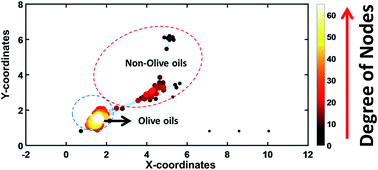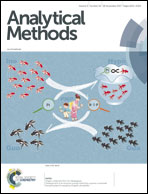Chromatographic unsupervised classification of olive and non-olive oil samples with the aid of graph theory
Abstract
Graph theory is a tool originating from discrete mathematics. A graph essentially consists of two fundamental units, nodes and edges. The nodes represent the samples and edges describe their connections. The edges are usually weighted with a dissimilarity value. Two nodes are similar if they have a smaller edge weight. In the present work, the analytical potential of graph theory and its ability to capture the heterogeneity present in the datasets are explored by analysing the high performance liquid chromatography (HPLC) datasets of 118 samples belonging to the classes of olive and non-olive oils. The graph theory based model clearly discriminated between the oil samples belonging to different classes. The obtained results show that graph theory can be used to achieve unsupervised classification of the samples. The present work suggests that graph theory should be considered as a useful analytical approach for analysing the data acquired for samples belonging to environmental, clinical, and pharmaceutical fields.



 Please wait while we load your content...
Please wait while we load your content...